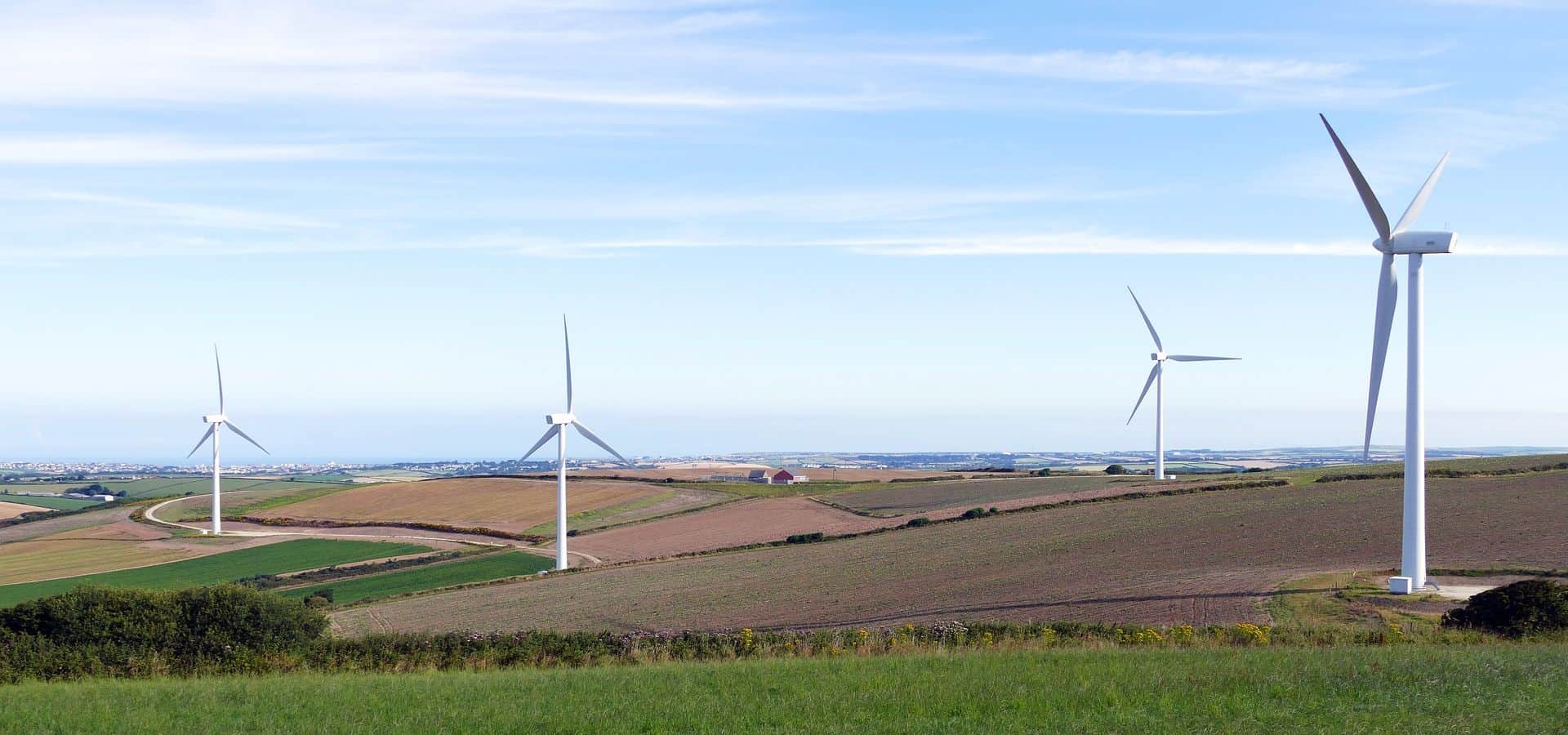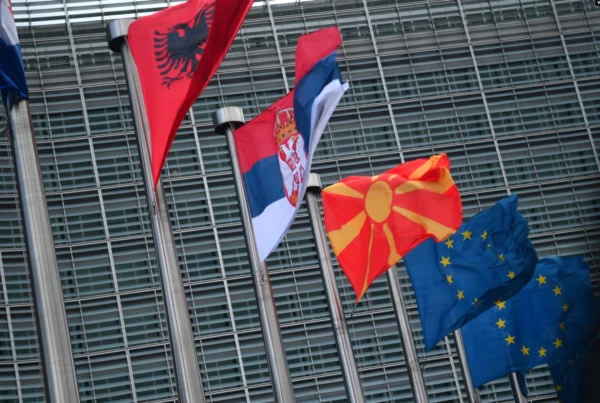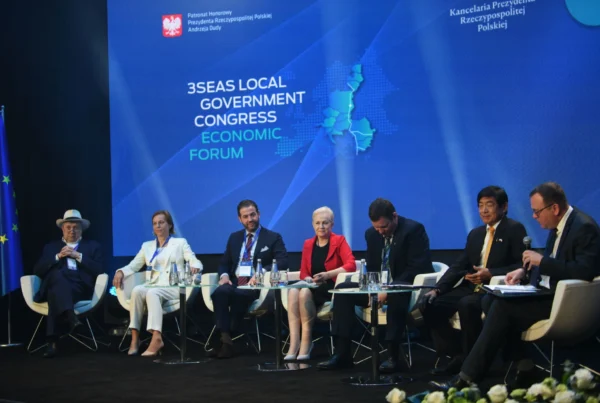Interview conducted by Jakub Skowron [1] and Andrea Bogoni.
Introduction
The global energy landscape is undergoing a profound transformation, driven by the urgent need to shift toward more sustainable sources of power. Across Europe, this transition is not only an environmental imperative but also an economic and strategic necessity. The European Union has set ambitious climate targets as part of its European Green Deal, aiming for carbon neutrality by 2050. Member states are therefore compelled to reimagine their energy strategies, modernize their infrastructure, and foster innovation in renewable energy technologies.
In this context, Poland stands at a critical juncture. Historically reliant on coal for its energy production, the country faces considerable challenges in aligning with EU climate directives while maintaining energy security and economic competitiveness. The need for a decisive energy transition is underscored by external factors such as fluctuating fossil fuel markets, geopolitical tensions, and growing international pressure to reduce carbon emissions. Yet, Poland’s journey toward decarbonization is also shaped by domestic concerns – ranging from the economic dependency of mining regions to the political complexities that influence energy policy.
Recognizing the scale of this challenge, Poland has initiated efforts to modernize its energy framework through policies such as the National Energy and Climate Plan (NECP). This framework outlines key goals for reducing greenhouse gas emissions, increasing energy efficiency, and ensuring a just transition for those most affected by the shift away from traditional energy sources. However, the implementation of these reforms faces numerous barriers, including political inertia, administrative inefficiencies, and infrastructural limitations. Amidst these complexities, technological innovation plays a pivotal role. From investments in wind farms and nuclear energy to the exploration of hydrogen technologies, Poland’s energy transition is gradually gaining momentum.
In the past, Blue Europe has often discussed issues related to energy in Central Europe. To explore the challenges and prospects currently faced by Poland, we spoke with Dr. Sebastian Michalik [2], Senior Research Specialist at the Łukasiewicz ITECH research unit, which specializes in science, technology, and innovation.
Interview with Dr. Michalik
What are the main political and administrative barriers to achieving the goals set in the updated National Energy and Climate Plan?
The update of the National Energy and Climate Plan is currently undergoing a public consultation phase and will soon be finalized. Both its market-engineering scenario (WEM) and its ambitious transformation scenario (WAM) set more ambitious energy and climate goals compared to the previous version, aiming for significant progress in the near term.
As before, the government’s political will remains crucial for the implementation of these plans. A lack of commitment in this area could prove to be the most significant political barrier. However, it is encouraging to see an increase in government action and plans for the energy transition. Over the next decade, PLN 65 billion is allocated for the expansion and modernization of transmission networks. This includes the construction of 30 new substations, the upgrade of more than 100 existing substations, and the installation of over 5,000 km of new transmission lines. Offshore construction work on the Baltica 2 offshore wind farm project is set to begin in late 2025.
Additionally, the government’s plans include increased support for distributed energy, biogas, district heating, and energy storage. However, it is important to note that there has been no amendment to the Windmill Act yet, despite it being announced as a priority immediately after the new government took office. This delay represents a significant administrative barrier to the development of onshore wind energy.
Regarding other administrative challenges, the processing of subsidy applications under energy programs remains inefficient, with significant delays in issuing executive acts related to RES laws. This lack of timely regulation hinders the uniform application of the law and slows the development of certain renewable energy sectors, such as energy cooperatives. Moreover, RES support schemes—such as auctions or FIT/FIP mechanisms—are not always tailored to the specific needs of different technologies and installation scales, reducing their effectiveness in promoting renewable energy development.
Grid connection refusals continue to be a major obstacle, blocking gigawatts of capacity, primarily from renewable sources. At the administrative level, the energy transition still does not receive the level of priority it requires. It must change.
What are the realistic prospects for accelerating the implementation of nuclear power in Poland?
During his speech at the Stock Exchange building, Prime Minister Donald Tusk emphasized that the government’s priority would be investments in the energy sector, aimed at lowering energy prices. One of the key projects in this area is the construction of a nuclear power plant.
On this occasion, the Prime Minister also announced that consultations were underway regarding the location of a second nuclear power plant. Meanwhile, the government has already taken concrete steps toward financing the first facility. Between 2025 and 2030, Polskie Elektrownie Jądrowe is set to receive PLN 60.2 billion to support its construction. The 2025 budget includes an allocation of PLN 4.6 billion to initiate preparatory work.
According to the latest plans, the first unit of the nuclear power plant is scheduled to be commissioned in 2036, with actual construction expected to begin in 2028. Although the timeline has been pushed back from the original projections, a clear roadmap remains in place.
In my opinion, the government is committed to realizing these plans, particularly as they align with Poland’s broader long-term economic development strategy. Additionally, the announcement of a rapid update to the National Program for Nuclear Power (NPPJ) is a positive sign.
Is the Polish industrial sector ready for full implementation of the hydrogen economy?
Polish industry must implement solutions to reduce its carbon footprint and energy costs, as this is crucial for maintaining competitiveness. However, at present, I am afraid it is not yet ready to fully transition to a hydrogen economy.
Despite Poland’s extensive experience in hydrogen production—but mostly the so-called grey hydrogen, obtained through steam methane reforming of natural gas, and it produces significant amounts of carbon dioxide. The rapid shift toward green hydrogen production, however, presents significant challenges.
First and foremost, Poland’s share of renewable energy sources (RES) in the energy mix remains too low to enable large-scale green hydrogen production. Additionally, the country lacks the large-scale electrolysers necessary to launch such production effectively. The first facilities for emission-free hydrogen production are only now being constructed.
Polish companies also face a shortage of financial resources for investing in new hydrogen technologies, which require substantial capital outlays. Furthermore, the absence of appropriate legal regulations is a major barrier to the development of the hydrogen market. A long-awaited law designed to accelerate the growth of the hydrogen economy has yet to be enacted.
Another critical challenge is the lack of adequate infrastructure for hydrogen distribution and usage, including refueling stations and technical facilities for hydrogen-powered vehicles.
Nevertheless, it is worth noting some renewed government interest in developing the hydrogen economy. The Ministry of Climate and Environment has announced a revision of its hydrogen strategy and the creation of a dedicated Hydrogen Fund, aimed at financing necessary investments using National Investment Program (NIP) funds. Additionally, the Ministry is working on an update to the Polish Hydrogen Strategy to 2030, originally adopted in 2021 under the government of Mateusz Morawiecki.
It is also worth mentioning that the Łukasiewicz Institute of Innovation and Technology (ITECH) has developed the Strategy for the Security of Hydrogen Technologies in Poland for 2023-2030. This document serves as a foundation for targeted research and development efforts, and collaborative social-communication initiatives between businesses and public institutions to ensure an adequate level of hydrogen technology safety.
This document contains important research findings that can serve as the basis for developing an informational strategy aimed at increasing public awareness and acceptance of hydrogen technologies. I believe this document could make a significant contribution to the development of Poland’s hydrogen economy
What are the biggest barriers and challenges that may hinder the development of energy communities in Poland?
The number of energy communities in Poland remains relatively small, but it is steadily growing. As of November 8, 2024, 47 energy cooperatives were registered with the National Agricultural Support Centre. This marks a significant increase compared to 2023, when only two cooperatives were in operation. However, this number is still far from satisfactory, given the benefits that such energy cooperatives can offer.
It is worth noting that the current government has ambitious plans for the development of energy communities in the coming years, reflecting the high priority placed on the distributed energy sector. According to the updated National Energy and Climate Plan (NECP), 300 energy communities are expected to be established by 2030. However, experts believe that the potential is much greater. At present, we are still far from reaching this target, and several factors contribute to this slow progress.
From a legal and regulatory perspective, key obstacles include: the incomplete adaptation of Polish law to EU directives on energy communities, excessive financial settlement requirements, and complex procedures for establishing and managing energy communities.
Technical and infrastructural challenges also play a crucial role. The expansion of energy communities depends on a well-maintained and modernized power grid, which remains an issue in Poland. Another difficulty is securing grid connection conditions for new installations and integrating renewable energy sources—whose production varies—into the existing system. This requires significant investment in energy storage and smart transmission networks.
Financial barriers are also a major concern, particularly in terms of investment in new installations. This challenge is especially evident in the case of biogas plants, which demand high initial capital expenditures.
Beyond these structural issues, social factors must also be considered. As a sociologist, I would emphasize the broader cultural and behavioral barriers. There is ongoing discussion about the lack of enthusiasm for cooperatives among farmers, who often prefer an individualistic farming model. This ties into a larger issue: Poland’s generally low levels of trust and social capital, as confirmed by numerous studies. Trust and a cooperative mindset are essential for the successful establishment and operation of energy communities.
Much work remains to be done in this area to foster the necessary conditions for the widespread development of energy communities in Poland.
What are the possible consequences for the Polish economy if the energy transition is not implemented in accordance with the EU’s climate objectives?
The consequences of this situation are manifold and undoubtedly detrimental to the Polish economy. The most significant impacts primarily concern a decline in competitiveness. Maintaining a high dependence on coal in the energy sector, along with the costs of importing raw materials and fuels, will lead to further increases in energy prices, which are already among the highest in Europe. This is largely due to the high cost of domestic coal, on which the Polish energy system remains heavily reliant.
The slow transition away from coal and other fossil fuels also results in rising EU Emissions Trading System (ETS) charges, which, combined, significantly weaken the competitiveness of Polish businesses on both European and global markets. Additionally, as an EU member, Poland is obligated to meet specific climate targets. Failure to comply with these commitments could result in financial penalties, placing an additional burden on the state budget.
Moreover, sluggish progress in the energy transition may discourage investors from allocating capital to modern technologies and renewable energy sources in Poland, ultimately limiting the country’s economic innovation. Another critical concern is energy security. Continued reliance on fossil fuels undermines Poland’s energy independence, a particularly pressing issue not only in the context of the war in Ukraine but also amid the escalating geopolitical rivalry between global powers and regional political blocs.
Finally—and this must not be overlooked—delays in the energy transition will lead to rising health and social costs associated with climate change, as well as increasing economic expenditures required for adaptation. Addressing these challenges proactively is essential to ensuring Poland’s long-term economic and environmental sustainability
Endnotes
[1] Jakub Skowron is a student of advanced sociological research at Adam Mickiewicz University in Poznań, collaborating with Blue Europe
[2] Dr. Sebastian Michalik holds a PhD in Sociology from the University of Warsaw. In addition to working for the Łukasiewicz ITECH research unit, Dr. Michalik has taught at the Higher School of Communication, Political Science, and International Relations, and later at the Institute of Social Prevention and Rehabilitation at the University of Warsaw. Since April 2019, he has been affiliated with the Educational Research Institute, where he focuses on the analysis and development of educational strategies.





